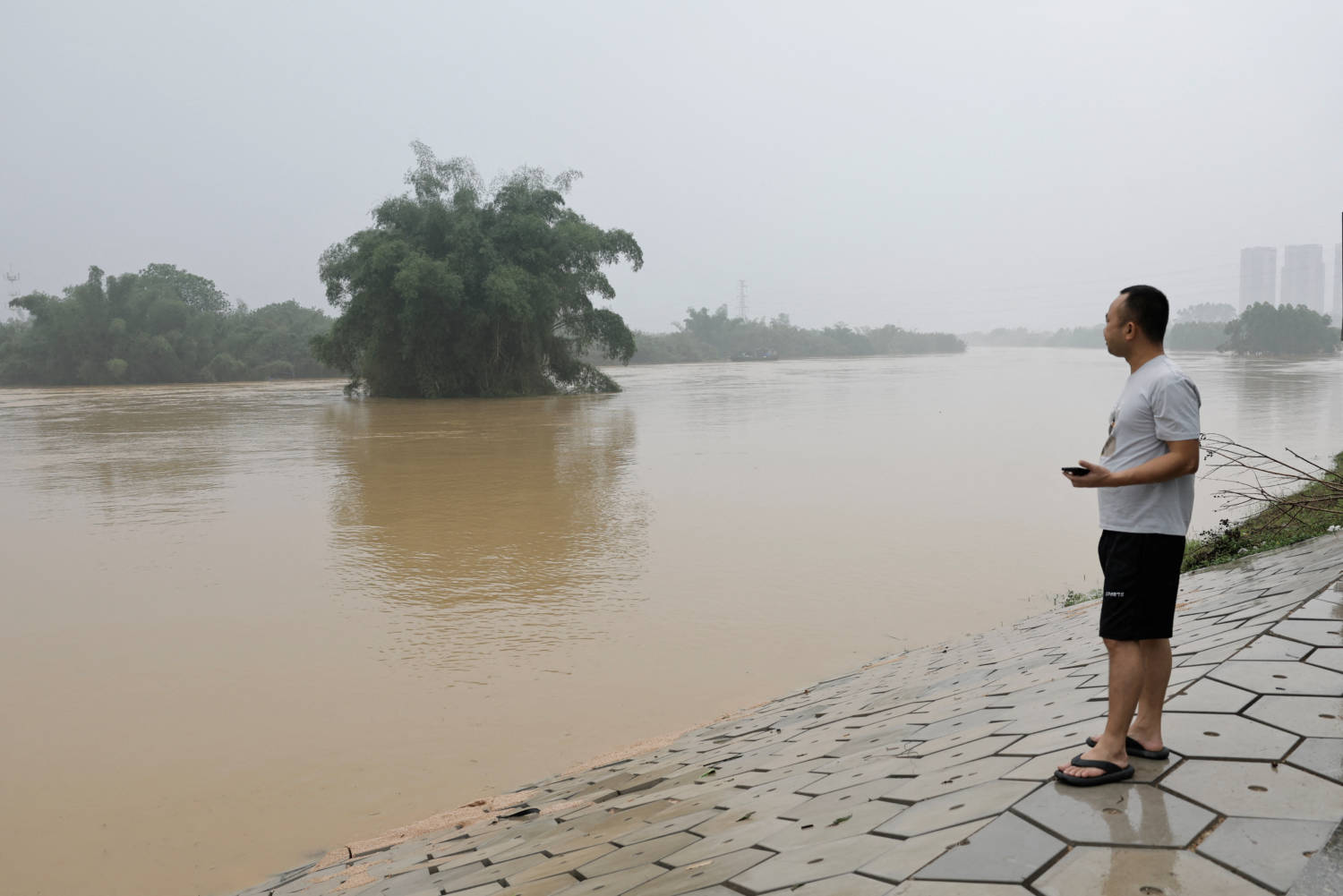Floods swamped a handful of cities in southern China’s densely populated Pearl River Delta following record-breaking rains, sparking worries about the region’s defences against bigger deluges induced by extreme weather events.
On Monday, rescuers on boats in China’s flood-hit Guangdong province raced to evacuate trapped residents, carrying some elderly people by piggyback from their homes and deploying helicopters to save villagers caught in landslides.
The province once dubbed the “factory floor of the world” is prone to summer floods. Its defences against disruptive floods were severely tested in June 2022 when Guangdong was pounded by the heaviest downpours in six decades. Hundreds of thousands of people were evacuated.
Since Thursday, Guangdong has been battered by unusually heavy, sustained and widespread rainfall, with powerful storms ushering in an earlier-than-normal start to the province’s annual flooding season in May and June.
In Qingyuan, a relatively small city of about 4 million north of the provincial capital Guangzhou, residents said the flooding over the weekend was not as severe as the 2022 floods, but they were still concerned.
“We’re worried the floods could be worse than two years ago,” said Song Xiaowei, who works at a spare parts factory.
“I’ve friends in Jintan town who have already removed their furniture. The village opposite that has been submerged to the first floor.”
Song said his factory was still operating as usual, but rivers were being monitored in case they spilled over onto roads.
One river in the area rose as much as 7 metres (23 feet), submerging nearby farmland, he said.
Over the weekend, the Bei River, a tributary of the Pearl River running through Qingyuan, overflowed its banks and submerged some houses and shops.
Rescuers tackled muddy waters, neck-high in some areas, to extract residents including an elderly lady trapped in waist-deep water in an apartment building, videos on social media showed.
Before 2022, it rarely rained as heavily as it does now, and the flood-waters were never as high, said Qingyuan resident Lin Xiuzheng, who worked in online retail sales.
Weather events in China have become more intense and unpredictable because of global warming, scientists say, with record-breaking rainfall and drought assailing the world’s second-largest economy, often at the same time.
Precipitation records for April have already been broken in many parts of Guangdong, with the cities of Shaoguan, Zhaoqing and Jiangmen to the west and north of Guangzhou also half-submerged in flood-waters.
No fatalities in Guangdong were reported, although 11 people in the province were still missing by Monday morning, state-owned Xinhua News Agency reported without giving further details.
ECONOMIC LOSS
Across the province, 36 houses collapsed while 48 were severely damaged, resulting in a direct economic loss of nearly 140.6 million yuan ($19.4 million), Xinhua reported.
Two companies in the province told Reuters there had been no immediate impact to business or supply chains.
“Everything’s running as usual and everyone got to work,” said a person who answered the phone at Camelot PCB, a print circuit board company that supplies Tesla TSLA.O and other electric vehicle makers.
Polyrocks Chemical, a plastics company that supplies technology giants such as Apple AAPL.O, Huawei and Samsung 005930.KS, also said its operations were not affected.
But many rivers remained swollen on Monday at levels above safety thresholds, with rainfall in recent days two to three times more than what is normally seen at this time of the year.
In Shaoguan, landslides trapped villagers who had to be rescued by helicopter while other rescuers travelled on foot to reach cut-off disaster sites.
The Chinese military also stepped in to help clear roads.
The rains eased early on Monday, but some schools in the province were suspended.
The strong convective weather in southern China was caused by a stronger-than-normal substropical high, a semi-permanent high pressure system circulating north of the equator.
The stronger subtropical high led to warmer temperatures that drew in more moisture-laden air from the South China Sea and even the Bay of Bengal, Chinese meteorologists said, resulting in the intense precipitation.
Thunderstorms are expected to return later in the week after a brief respite.
($1 = 7.2431 Chinese yuan renminbi)
(Reuters)






